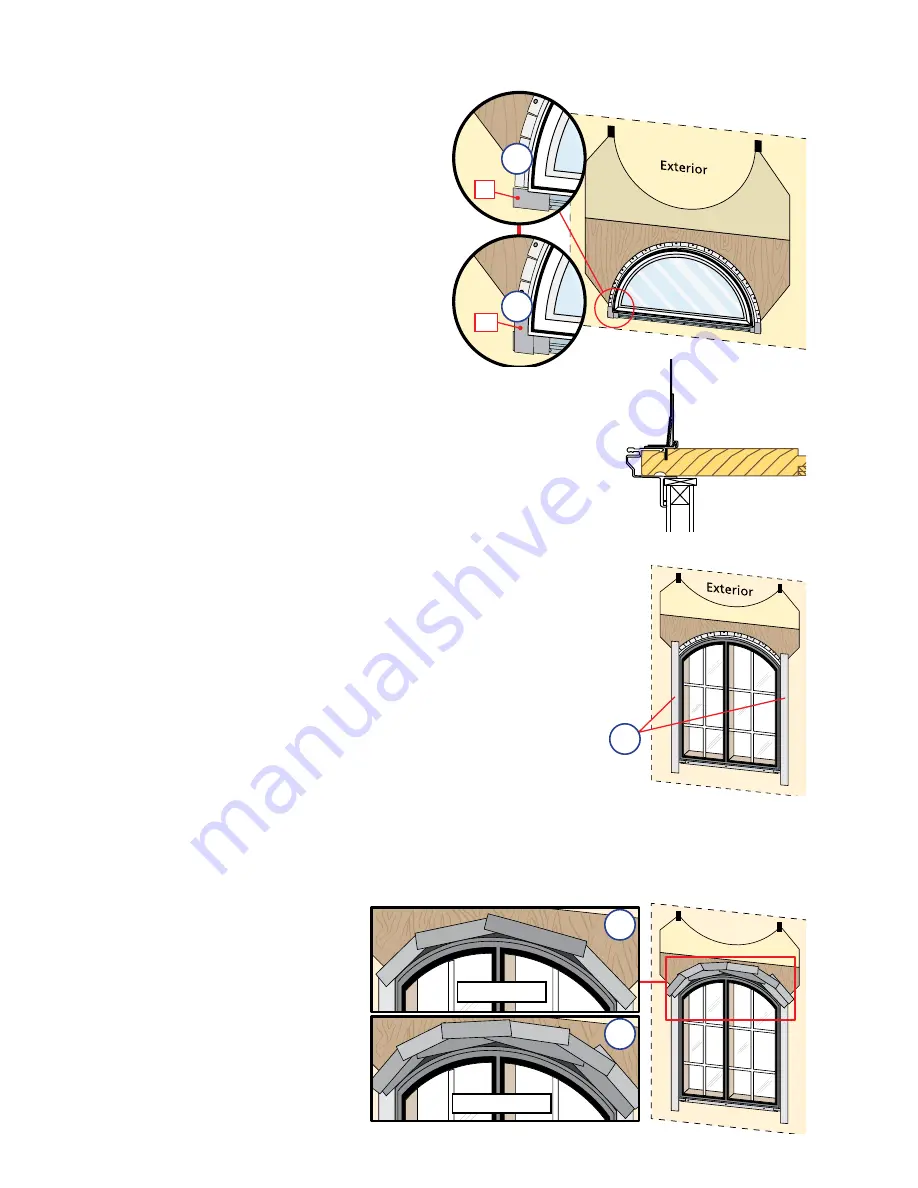
4
INTEGRATING THE WINDOW TO THE WATER RESISTIVE BARRIER
A.
Units that do not have pre-applied fin
corners:
Cut four pieces of flashing tape
LONG!PPLYONEPIECEOFmASHING
tape to each end of the sill fin so that it
EXTENDSPASTTHEENDOFTHESILL
fin. Apply one piece of flashing tape to
the bottom end of each flexible vinyl fin,
BEGINNINGFROMTHEENDOFTHElN
and lapping over the flashing tape that
extends from the end of the sill fin.
Note: The flashing tape must be applied approximately 1/2"
onto the frame cladding at the jambs and head. Pre-folding the
tape at 1/2" before removing the paper backing will make it
easier to apply the tape correctly. If the siding is less than 1/2"
thick, adjust the dimension of the fold so the exterior sealant
line will cover the exterior edge of the tape.
B.
Apply side flashing tape.
#UTTWOPIECESOFmASHINGTAPELONGER
than the frame height of the window. Position the tape so it laps
ONTOTHEFRAMECLADDINGCOVERSTHElNANDLAPSONTOTHEWATER
RESISTIVEBARRIER4HETAPESHOULDEXTENDABOVETHETOPOFTHE
WINDOWANDBELOWTHEBOTTOMOFTHEWINDOW0RESSTHETAPEDOWN
firmly while folding down the excess tape at the top and bottom of
the window.
Note: DO NOT tape or seal the bottom nailing fin.
C.
Circle top window:
Apply top flashing tape. First layer:
Several pieces of flashing tape will be needed
to cover the top fin. Start taping from the sides of the window working toward the
peak. To determine the length of cuts, hold the tape along the radius, and cut the
tape just past where it leaves the top fixed extruded fin or for the flexible fin, just
PASTTHEmEXIBLEWEATHER
strip. The top tape must
overlap the one beneath
it in order to divert water
properly. The sharper the
arc of the window, the
shorter the pieces of tape
will be.
Second layer:
Apply a
second layer of tape just
above and overlapping the
first layer of flashing tape by
ANDOFFSETTINGTHESEAMS
of the first layer. Press the
tape down firmly.
TU
OE
"
"
#
&YUFSJPS
$
'JSTU-BZFS
$
4FDPOE-BZFS















